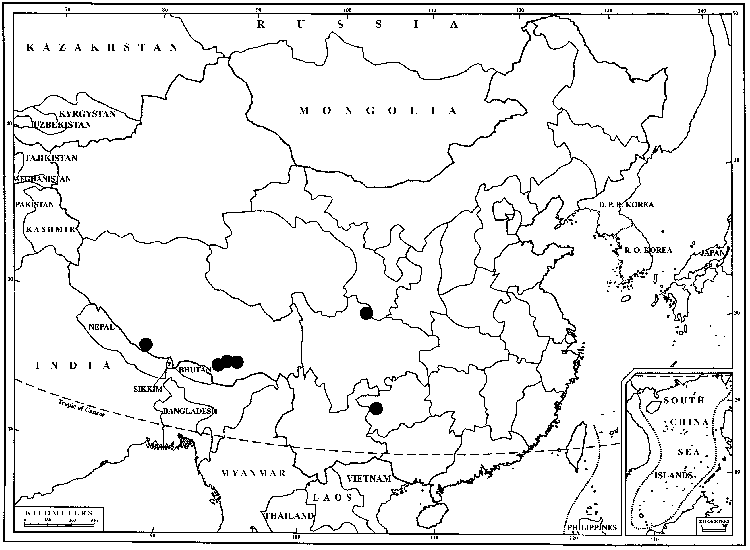Syntrichia fragilis
Fragm. Florist. Geobot. 37: 212. 1992,.
Stems (5–) 10–25 mm. Leaves crowded, longitudinally folded and spirally twisted around the stem (but little crisped) when dry, widespreading when moist, oblong-lingulate to spatulate, 2–3.5 × 0.75–1 mm, fragile, with sheets of cells breaking off, sometimes along lines of weakness; margins revolute before to as much as 1/2 the leaf length, to plane, entire or crenulate; apices truncate to acute; costa percurrent or slightly excurrent as a mucro 1–3 (–5) cells long, yellow or red, finely to strongly papillose abaxially, abruptly tapered; basal-cells abruptly differentiated, becoming rather abruptly shortrectangular near the margins; distal cells quadrate-hexagonal, 9–15 µm, bulging, with 3–8 papillae per cell, with moderately thick walls, not particularly collenchymatous; distal marginal cells not or weakly to strongly differentiated as a border of brownish, thicker-walled cells in about 2–3 rows. Specialized asexual reproduction absent. Sexual condition dioicous. Seta red, 10–15 mm. Capsule red, (1.5–) 2–4 mm, slightly curved, rather gradually tapered to the seta or with a distinct neck; operculum 1–1.5 mm, red; peristome 1–1.5 mm, teeth twisted about 1/2 turn, the distal divisions yellow, the basal membrane pale, about 1/4 the total length. Spores 13–20 µm, densely papillose.
Habitat: Bark of trees, rock (usually calcareous), occasionally soil
Elevation: low to high elevations
Distribution

Ariz., N.Mex., N.C., Okla., Tenn., Tex., Va., W.Va., Mexico, Central America, South America, Europe, Asia (China), Asia (Iran), Pacific Islands (Hawaii)
Discussion
Syntrichia fragilis shows considerable variability in size and leaf shape (apparently correlated with habitat conditions). In some small, corticolous plants, extreme fragmentation is evident, with an abnormal development of the lamina beyond the usual outline of the leaf. In such plants, several regions of each leaf seem to remain meristematic and produce scalloped or ruffled extensions that eventually break off. Fragility of leaves should not be considered an infallibly diagnostic character, however, since some plants of S. fragilis have quite firm leaves, and the leaves of some other species, particularly when old, may become broken.
Selected References
None.
Lower Taxa
"plane" is not a number.